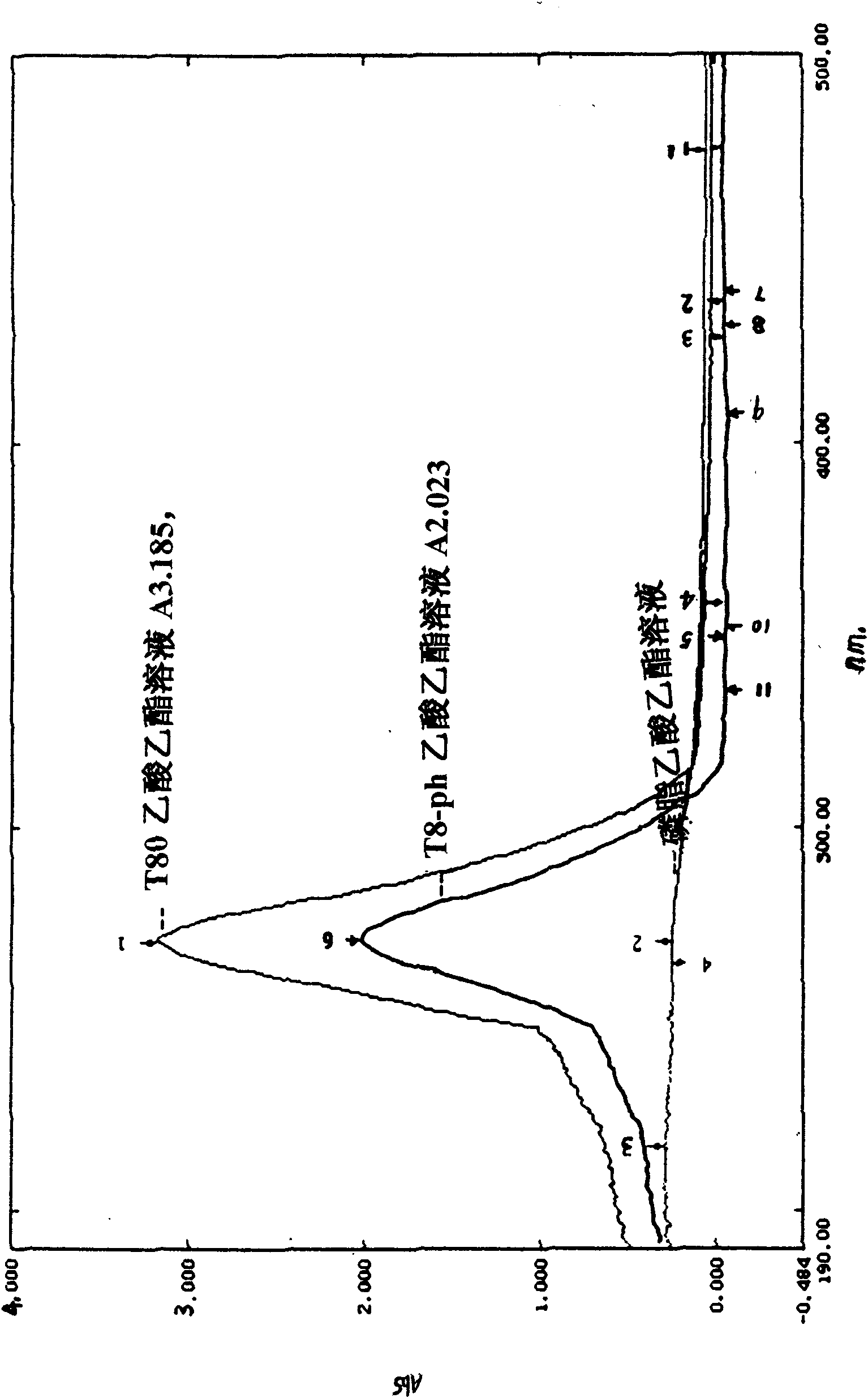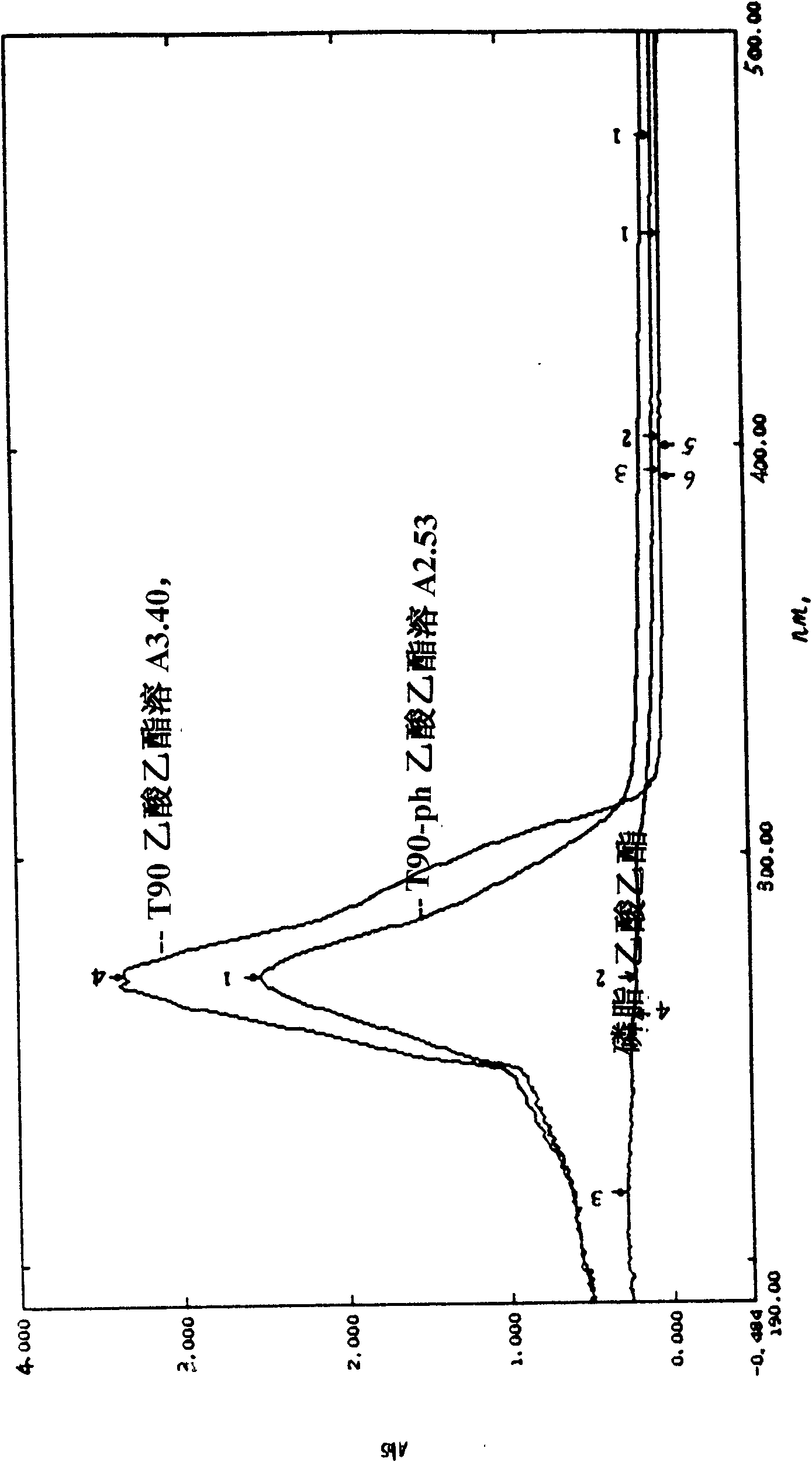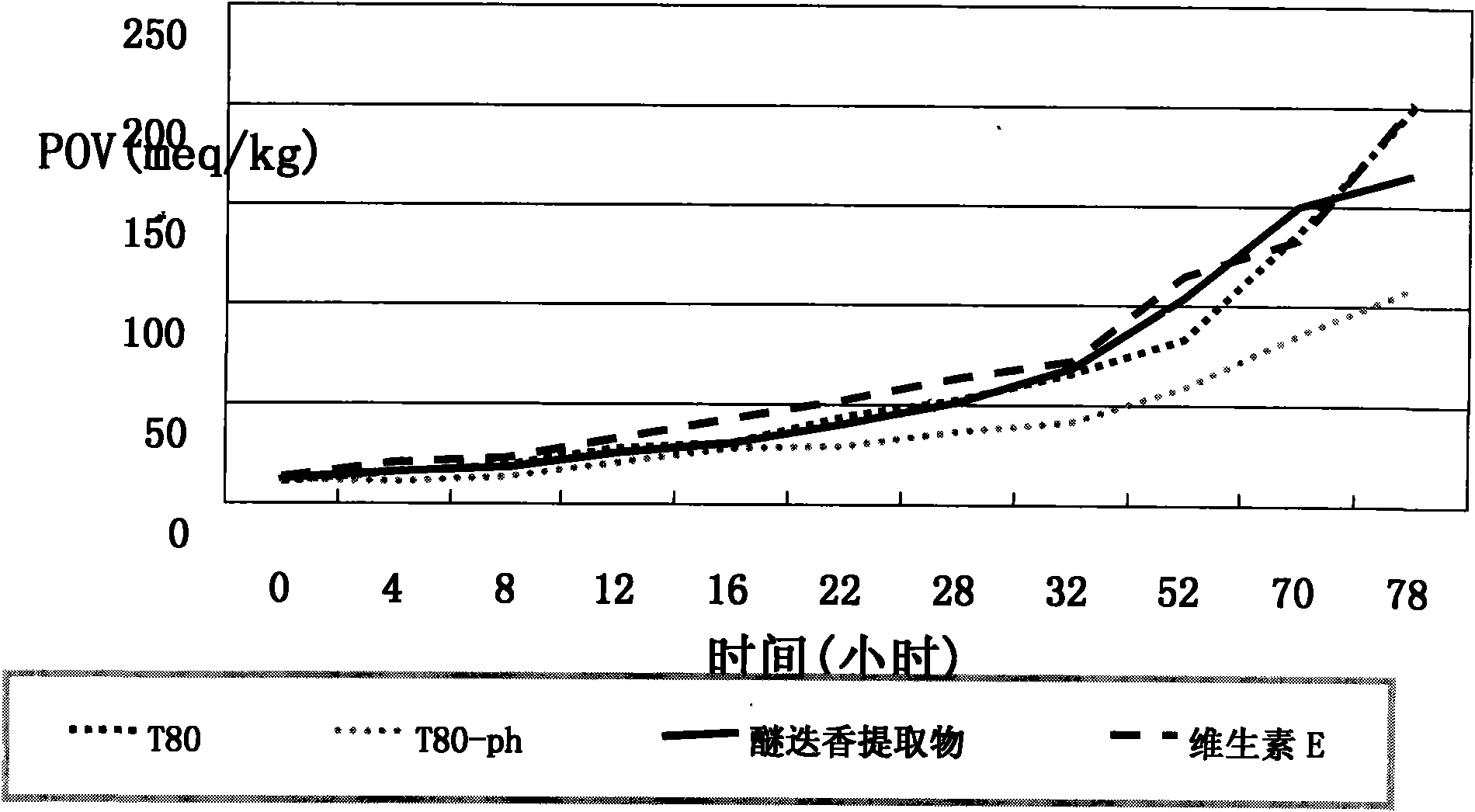Tea extract-phytosomes composite and preparation method thereof
A technology of tea extract and phospholipid complex, applied in tea extraction, food preparation, food science, etc., can solve the problems of limiting human physiological activity, reducing bioavailability, poor stability, etc.
- Summary
- Abstract
- Description
- Claims
- Application Information
AI Technical Summary
Problems solved by technology
Method used
Image
Examples
Embodiment 1
[0080] Put 15 grams of soybean lecithin into a three-necked flask, add 200 ml of chloroform and stir at room temperature to dissolve, gradually add 10 grams of TE (total catechin content 80%) while stirring, gradually heat up to 40 ° C, stir for 2 hours, and then stir While gradually adding 20 ml of absolute ethanol, the solution was clarified after continuing to stir for 2 hours. The solvent is recovered by filtration and vacuum-dried to obtain the tea extract phospholipid complex (TE-ph) product.
Embodiment 2
[0082] Take 16 grams of lecithin and put it in a three-necked flask, add 350 ml of petroleum ether and stir to dissolve at room temperature. Another 10 grams of TE (total catechin content 80%) was gradually added to the petroleum ether phospholipid solution, and the temperature was gradually raised to 40 ° C. After stirring for 2 hours, 20 ml of absolute ethanol was gradually added while stirring, and the solution was clarified after continuing to stir for 1 hour. . The solvent was recovered by filtration and dried in vacuum to obtain the TE-ph product.
Embodiment 3
[0084] Get 45 grams of soybean lecithin and put it in a three-necked flask, add 900 ml of chloroform and stir to dissolve at room temperature. Another 27 grams of TE (total catechin content 50%) was gradually added to the chloroform phospholipid solution while stirring, and the temperature was gradually raised to 60°C. After stirring for 2 hours, 50ml of absolute ethanol was gradually added while stirring, and the stirring was continued at 40°C The solution was clear after 2 hours. The solvent was recovered by filtration and dried in vacuum to obtain the TE-ph product.
PUM
 Login to View More
Login to View More Abstract
Description
Claims
Application Information
 Login to View More
Login to View More - R&D
- Intellectual Property
- Life Sciences
- Materials
- Tech Scout
- Unparalleled Data Quality
- Higher Quality Content
- 60% Fewer Hallucinations
Browse by: Latest US Patents, China's latest patents, Technical Efficacy Thesaurus, Application Domain, Technology Topic, Popular Technical Reports.
© 2025 PatSnap. All rights reserved.Legal|Privacy policy|Modern Slavery Act Transparency Statement|Sitemap|About US| Contact US: help@patsnap.com



